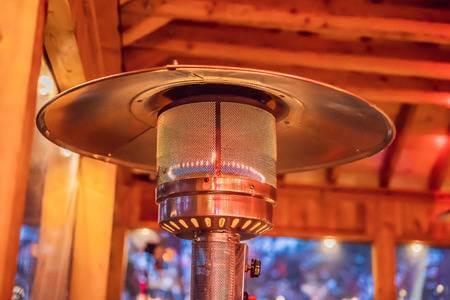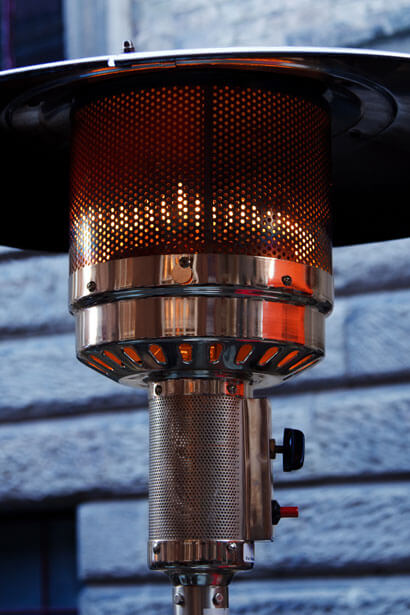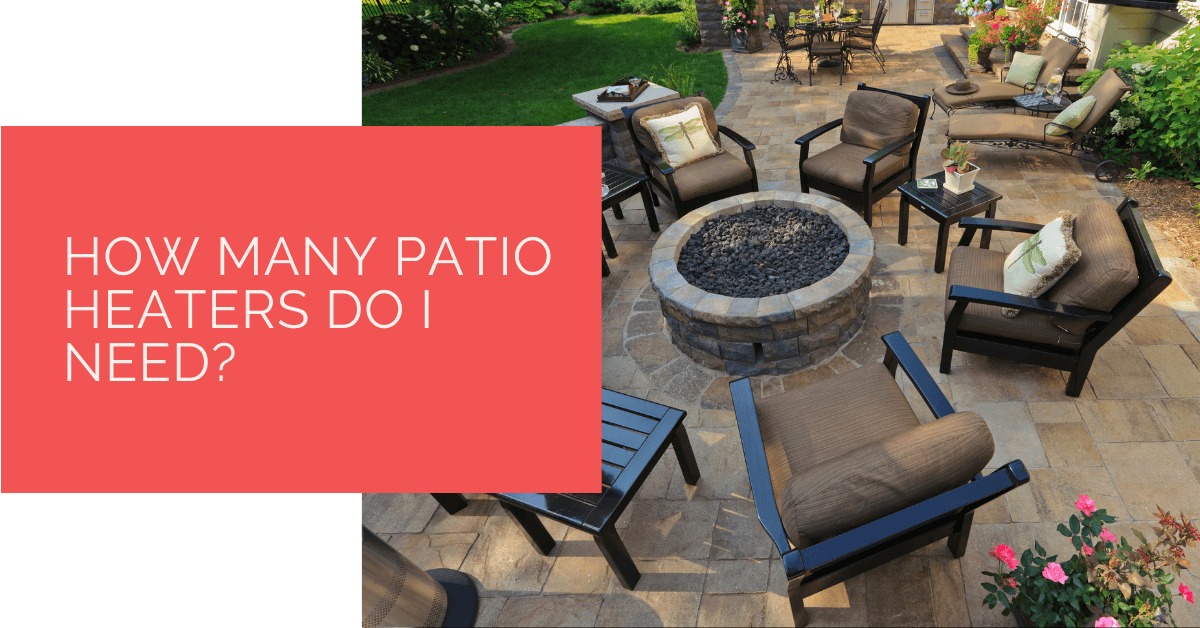Winter is upon us, which means that patio heating season is now full swing. Patio heaters are a perfect way to extend the usable seasons of your patio. With a good patio heater of a higher BTU, you can comfortably use your patio space in the winter as well.
But a patio heater is effective only if you gauge your requirements correctly and install heaters accordingly. These factors include the size of your patio, size of the space to be heated, positioning, etc. So how many patio heaters do you need? Read on to find out!
Contents
Key Takeaways
- The number of patio heaters you need depends on factors like the size of your space, BTU output, and positioning, with one heater typically sufficing for 1500-2000 square feet in covered spaces.
- Consider the type of patio heater’s fuel source, such as propane, natural gas, electric, or wood, based on your preferences and available resources.
- Patio heaters come in various designs, including floor-standing, hanging, wall-mounted, tabletop, and fire pits, allowing you to choose the one that best suits your space and heating needs.
Considerations
Buying the first patio heater you see and expecting it to heat your patio will not work. You must first factor in all the below-mentioned conditions and decide the capacity and number of the patio heaters required accordingly. Each element will alter your needs marginally, and hence you must pay attention to all of them. They are as follows.
Size of space
The size of your patio should be your topmost concern when it comes to deciding the number of patio heaters you need to buy. Usually, one patio heater should suffice for a covered space of around 1500-2000 square feet.
Before getting excited, understand that this number is for covered spaces only. Covered spaces can generally hold heat better and can do better with lesser patio heaters.
But what about uncovered patios? Well, you can get yourself a free-standing patio heater, which can generally heat a twenty-foot diameter area (around 314 square feet)

BTU output
BTU, or British Thermal Unit, is a unit you will often encounter while comparing patio heaters. Essentially, it refers to the amount of heat produced by a particular unit. Hence, if your heat output is on the lower side, you might want to consider getting more to cover an area.
A decent free-standing patio heater generally produces around 30,000 to 50,000 BTUs, which might not even end up getting utilized to its total capacity. To understand why here is a table to help you figure out how much BTU output is required for a given area.
| Area | BTU Estimate |
|---|---|
| 100-450 sq. ft. | 5000-10000 |
| 450-1000 sq. ft. | 10000-20000 |
| 1000-1500 sq. ft. | 20000-24000 |
| 1500-2000 sq. ft. | 24000-30000 |
| 2000-2500 sq. ft. | 30000-34000 |
If you still can’t make up your mind, then you can go for a larger BTU patio heater than you need. Most patio heaters offer you the option to reduce heat if necessary.
Positioning
A patio heater is unlikely to heat the entire patio area. Therefore, it makes sense to buy multiple smaller heaters, and place them around the patio at places where people are most likely to congregate. Why even heat the space where no one usually is?
For instance, you can go ahead and place one patio heater near the patio dining area, and the other one under the pergola. This way, you end up distributing heat where it is necessary.
If you still aren’t sure where you might want to place your heaters, you could get a patio heater on wheels. These are considerably easier to move and can be placed anywhere you wish to.
Safety
Finally, you should make sure that none of the patio heaters are placed in such a way that they might put your property or life at risk. Here are some safety precautions you should take before setting up your patio heater.
- Place the heater far away from flammable objects. Keep it at a minimum distance of three-foot from your house and other ignitable things.
- Pay heed to all the manufacturer’s instructions while operating the heater.
- Make sure that the patio heater isn’t at the risk of tipping over.
- Use the appropriate BTU output for the situation.
- Never leave the patio heater running unattended.
- Get your patio heater serviced by a professional every few years.
How to Calculate the Number of Propane Heaters You Need?
Once you assess your needs, you need to determine the number of patio heaters you need. For this, you can use a rough formula to determine the total BTUs required per hour to heat the space in question. You go ahead and multiply the desired temperature change with the volume of space to be heated x 0.133.
Formula: Heat required = (desired temperature change) x (volume of space) x 0.133
For instance, let’s say that you want to heat a 1000 sq. ft. indoor area with an 8 ft. tall ceiling. If you’re going to raise the temperature from 30 degrees to 70 degrees, the required heat would be 42,500 BTUs per hour. Use the formula to find out the heat required, and refer to the BTU as mentioned above table to figure out the number of heaters you might need.
Although, there is one hiccup. The formula does not consider the variables presented by an outdoor event (e.g., the movement of guests, amenities required, etc.).
So, all in all, you will need a high BTU output patio heater for a covered area of 1500 sq. ft. Just make sure that the heater is kept reasonably far away from all combustible items.
On the other hand, an uncovered patio will require as many free-standing patio heaters as you have places where people generally congregate.

Types of Patio Heaters
Patio heaters are subdivided based on the type of fuel source they use. Read on to take a closer look into each of these fuel types, and select the one best suited for your specific needs.
Propane
Propane patio heaters give out a significant amount of heat, and can be easily installed in your patio or yard. They are easy to put together since all you have to do is put them together, attach the gas tank, viola! Therefore, these are the most commonly used patio heaters.
Natural Gas
If you happen to have a natural gas outlet in your outdoor space, then you can opt for a natural gas patio heater. Even if you don’t, you can hire professionals to do it for you. These patio heaters, just like the propane heater, produce higher BTU and can heat larger areas. Moreover, you don’t have to fret about running out of fuel either.
Electric
If you don’t want the hassle of propane tanks or natural gas lines, you can go to an electric patio heater. Electric patio heaters don’t require installation except for hanging and wall-mounted models. All you need to do is plug them in, and they are good to go. The backdrop here is that electricity costs a little more than fuel or wood for daily use, but they are effortless to use and maintain.
Wood
A wood patio heater is so famous for the ambiance it creates. Although, it requires a lot of maintenance, continuous supply of wood to keep the fire going, clean the ashes after, etc. Nevertheless, it is a pretty sight to sit by, and the smell of wood releases as it burns.
Various Design Options for Patio Heaters
Patio heaters can be divided into different types based on their overall design. They are as follows.
Floor-Standing Patio Heaters
If you choose to opt for a gas heater, then floor-standing patio heaters are the most common types you’ll find. They are generally tall, thin, and can produce a good amount of heat. They are usually used in outdoor locations.

Hanging and wall-mounted heaters
If you want to save floor space on your patio, then wall-mounted hanging patio heaters are the best option for you. These heaters produce an adequate amount of heat, enough to keep you comfortable, and save space. They are usually electric, and might require professional assistance for installation.
Tabletop Heaters
Tabletop heaters are affordable patio heater options. They heat minimal space, are usually electric, and are perfect if you want to heat a small room. These are smaller versions of floor-standing patio heaters.
Fire Pits and Chimineas
Fire pits and chimineas are wood patio heaters and produce the previously discussed ambiance. Although they can get expensive if you opt for larger models, these are affordable. Fire pits and chimineas require considerable maintenance, but it’s a price you have to pay for the ambiance.
Heat Pump Source: Reliable Heating and Cooling Solutions
At Heat Pump Source, we take pride in our unwavering commitment to serving the UK with top-tier HVAC solutions. From the efficiency of heat pumps and the cool relief of air conditioning to the warmth of boilers, radiators, and underfloor heating, our dedicated team is always at the forefront of innovation. We understand the unique needs of every household and business, and we strive to provide dependable health and cooling products and services that are tailored just for you. Ensuring your comfort and satisfaction is our utmost priority. Whether you have questions, need guidance, or require support, we’re always here to assist. Please don’t hesitate to contact us; we’re eager to be of service.
Conclusion
In the end, the number of patio heaters you might need all boils down to how much you are willing to spend, and the size of your space. If you have an enormous outdoor patio, you might need a couple of heaters to have gatherings in cold months. Assess your needs and factor in all the variables to land on the correct number.
About the Author
At Heat Pump Source, our articles are the product of a collaborative effort among a team of highly skilled HVAC experts. Our dedicated professionals, hailing from diverse backgrounds in heating, ventilation, air conditioning, and refrigeration, contribute their extensive knowledge and experience to every piece of content. This multidisciplinary approach ensures comprehensive coverage. Our commitment is to deliver authoritative, reliable, and tailored advice to meet the unique needs of every household and business across the UK.

